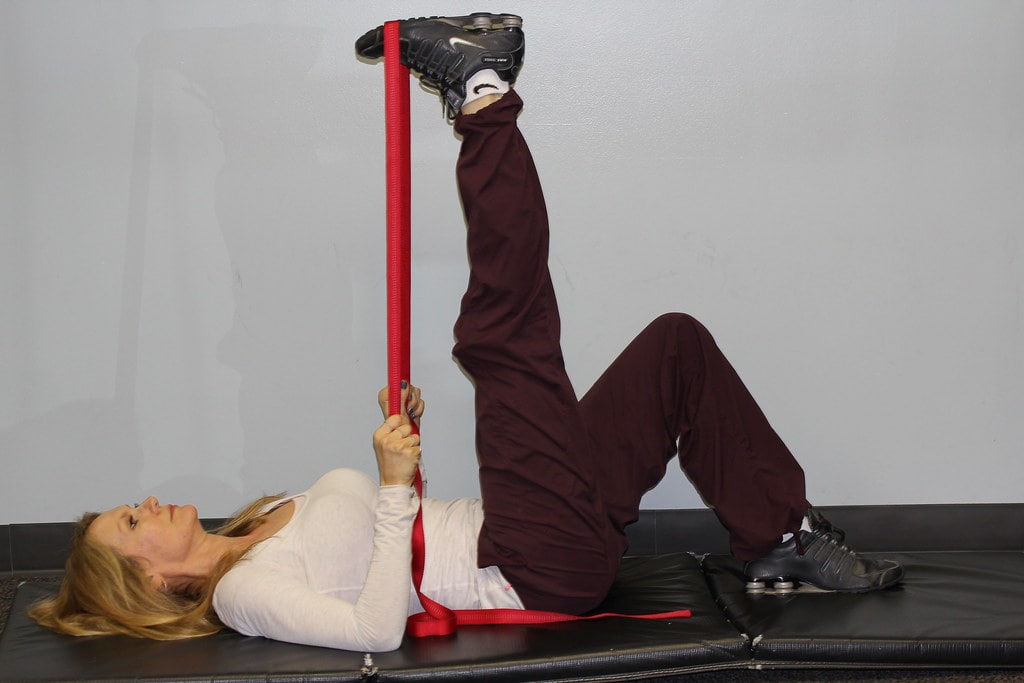Lumbar instability can be a crippling condition, leading to chronic pain and potential neurological dysfunction. But don’t worry, there’s hope for those dealing with these challenges. Lumbar Spinal stabilization exercises have emerged as a reliable solution, offering relief and a better quality of life to those grappling with segmental instability and chronic pain.
These exercises act as a lifeline for your lower back, providing the support it needs to regain stability and reduce discomfort.
Understanding Lumbar Instability:
Lumbar instability is characterized by a significant decrease in the spine’s stabilizing system’s capacity to maintain intervertebral neutral zones within physiological limits. This loss of stability can lead to pain, spinal deformity, and even neurological damage.
It’s crucial to address not only the lumbar region but also the surrounding anatomical structures, including the abdominal and lower extremity muscles.
Why Lumbar Spinal Stabilization Exercises Work?
Stabilization exercises have been successful in treating segmental instability and chronic pain. Research suggests that even in the absence of degeneration, a lack of muscle strength can contribute to low back pain. Therefore, strengthening the stabilizing muscles of the spine becomes essential.

Muscle Targeted in Spinal Stabilization Exercises
In lumbar instability, several muscle groups come into play, including the transversus abdominis, quadratus lumborum, oblique abdominals, multifidus, and erector spinae. These muscles work together to provide support and stability to the lumbar spine.
Exercise Techniques
The journey to lumbar stability begins with specific exercises targeting these muscle groups. It’s essential to focus on precise co-contraction patterns and engage local spinal muscles. Techniques such as drawing in the abdominal wall and contracting the multifidus are key components of the exercise program.
Specific feedback techniques help develop kinaesthetic awareness and improve muscle contractions, allowing patients to hold the “corset” action for extended periods.
7 Best Lumbar Spinal Stabilisation Exercises
Hamstring Stretch:

This passive exercise aims to improve flexibility. Lie on your back with knees bent and feet flat on the floor. Keep your spine in a neutral position while slowly straightening one leg and lifting the heel toward the ceiling. Hold for 10-30 seconds and switch to the other leg. Repeat this exercise 3 times. It’s a gentle way to stretch the hamstrings and promote flexibility.
Pelvic Tilt:

An active exercise that involves isolating and engaging the abdominal muscles to move the spine. Lie on the floor with knees bent and feet flat. Tighten your stomach muscles and gently pull the lower back to the floor. Hold for 10 seconds and repeat 3-5 times. This exercise helps with core stability.
Bridge:

The bridge exercise focuses on strengthening the glutes and core. Lie on your back with knees bent and feet hip-width apart. Exhale as you brace your abdominals, engage your glutes, and lift your hips off the ground. Inhale as you lower your hips back down. Repeat this exercise 8-10 times. It’s excellent for improving core strength.
Side Plank on Knees:

This exercise targets the hip abductors. Begin from a seated position on your side, with your legs bent and stacked. Bend your elbow and lower your forearm to the ground next to you. Exhale to push your forearm into the floor and lift your hips into the air. Inhale to lower your hips halfway, and exhale to lift them up again. Perform 8-10 repetitions on each side.
Bird Dog:

Starting on all fours, this exercise challenges your balance and stability. Exhale as you draw the abdominals in, and lift one leg behind you while lifting the opposite arm in front. Hold this position for 3 slow counts and then return to the starting position. Complete 6-8 repetitions on each side.
Exercise Ball Bridges:

Utilizing an exercise ball, this exercise introduces unpredictable movements that challenge your core stability. With both feet on the exercise ball and legs straight, lift your buttocks off the floor by tightening your buttock muscles. Perform this exercise to increase core strength and balance.
Stretching and Aerobic Conditioning:

In addition to these strengthening exercises, it’s essential to incorporate stretching and aerobic conditioning into your lumbar spinal stabilization routine. Stretching helps maintain flexibility, making it easier for muscles to assume a neutral position. Cardiovascular conditioning improves overall muscle strength and endurance.
Benefits of Lumbar Stabilization Exercises
Lumbar stabilization exercises offer numerous benefits, including
- a decrease in lower back pain
- improved posture
- enhanced core stability
- increased neuromuscular control
- improved muscular strength and endurance
- These exercises are cost-effective and can effectively reduce radiating pain.
Implications for Practice:
It’s crucial to train both the local and weight-bearing muscles. This helps reverse impairments in the non-weight-bearing muscles, ensuring a balanced and coordinated muscular system. The gradual increase in gravitational load cues enhances muscle responses, further promoting stability.
The Segmental Stabilization Model:
The exercise model for preventing and treating low back pain involves three stages, each focusing on the development of joint protection mechanisms. These stages include clinical assessments of joint protection mechanisms, followed by suggested exercise techniques tailored to individual needs.
When to Incorporate Lumbar Stabilization Exercises?
Before starting lumbar stabilization exercises, it’s crucial to consult with a medical professional or physical therapist, especially if you’re dealing with acute pain. These exercises can be added to your fitness program once you’ve received approval and your pain has decreased.
Conclusion
Lumbar stabilization exercises provide an effective means of managing low back pain and joint instability. These exercises, when performed correctly, strengthen and support the spine and surrounding structures, leading to a healthier and pain-free back.
Remember, it’s essential to collaborate with a healthcare professional or a certified instructor to create a workout plan that suits your unique requirements. With time, commitment, and expert guidance, you can experience less discomfort, enhance your core strength, and ultimately lead a better and pain-free life. It’s a journey worth embarking on for the well-being of your lower back.
So this was the end of the article- 7 Best Lumbar Spinal Stabilization Exercises & Complete Guide! I hope you liked it, if so, kindly read our other articles too-
7 Best Benefits of All-On-4 Dental Implants: Revolutionizing Dental Health
10 Amazing Benefits of Sclerotherapy: Path to Healthy Veins!
